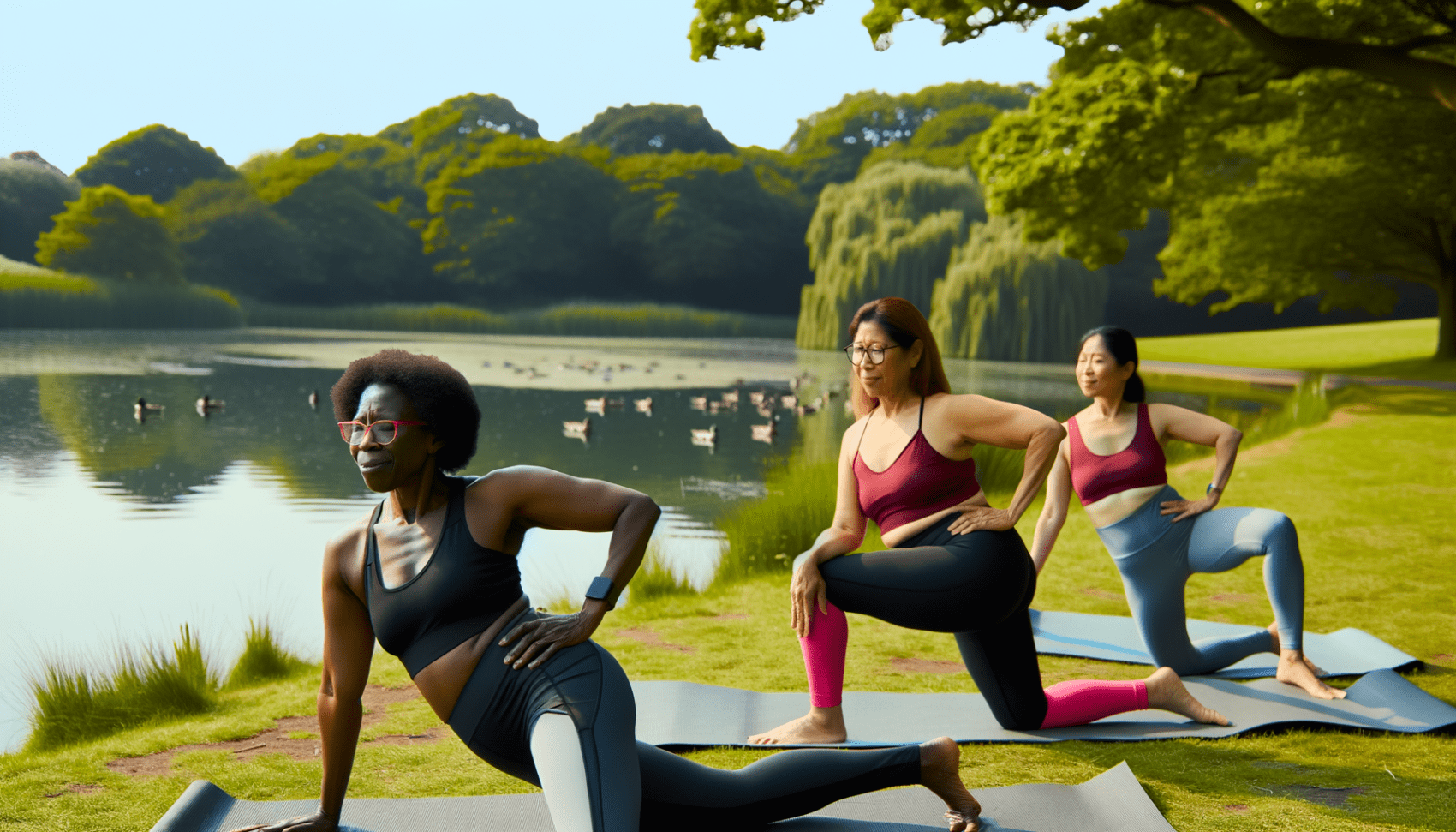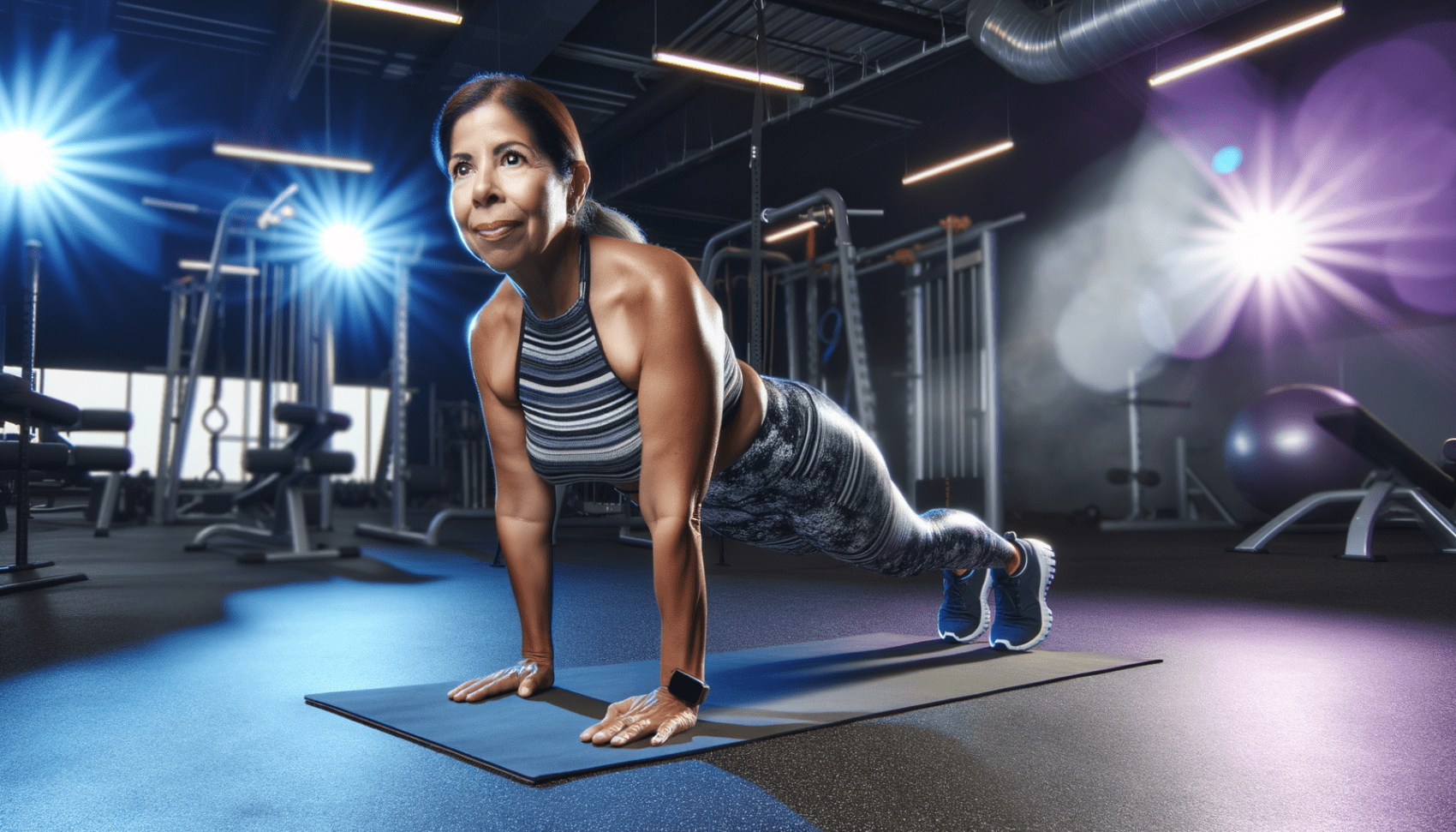Introduction to Strength Training for Women Over 50
Importance of Strength Training in Later Years
As women cross the threshold of 50, the significance of maintaining a robust physique becomes paramount. Strength training, a subset of resistance training that involves lifting weights to enhance muscle strength and size, is not just about aesthetics; it’s a vital component of a healthy lifestyle. For women over 50, it becomes especially crucial as it helps counteract the natural decline in bone density and muscle mass associated with aging and menopause. Engaging in strength training can lead to stronger bones, reduced risk of osteoporosis, and a lower likelihood of fractures.
Understanding the Physical Changes After 50
Reaching the age of 50 often brings about a series of physical transformations. Women experience a decline in estrogen levels due to menopause, which can lead to a decrease of up to 10% in bone mass, making bones more fragile. Concurrently, muscle mass naturally diminishes, slowing down metabolism and making weight management more challenging. These changes underscore the need for targeted physical activity to maintain health and vitality.
Benefits of Strength Training for Women Over 50
Strength training extends beyond bone health and muscle preservation. It is a powerful tool for burning fat and calories, particularly when incorporating full-body compound exercises like squats. Moreover, it can elevate levels of dopamine and serotonin, the “happy hormones,” aiding in the management of menopausal mood swings. The benefits are comprehensive, including improved balance, stability, posture, and overall quality of life.
- Prevents bone loss: Strength training stimulates bone growth and can prevent or reverse the effects of osteoporosis.
- Boosts metabolism: Building muscle mass through strength training helps maintain a healthier metabolism, aiding in weight management.
- Enhances mood: Exercise increases the production of hormones that promote feelings of well-being, helping to manage mood fluctuations.
Safety Considerations Before Starting
Before embarking on a strength training regimen, safety should be at the forefront. It is essential to consult with healthcare professionals to ensure that the chosen exercises are appropriate for your health status. Starting with bodyweight exercises or resistance bands can be a gentle introduction to strength training. It’s recommended to train 3-4 days per week, with rest days for muscle recovery. Emphasizing core strength is also vital for overall stability and posture. When progressing to weights, begin with fixed resistance machines to learn proper form and minimize injury risk. Always focus on slow, controlled reps and remember to breathe correctly during exercises.
By understanding the importance of strength training, recognizing the physical changes after 50, and reaping the multifaceted benefits, women can approach their later years with confidence and strength. With the right safety measures and a tailored approach, strength training can be a transformative component of a healthy lifestyle for women over 50.
Getting Started with Strength Training
Consulting with Healthcare Professionals
Before embarking on a new strength training regimen, it’s crucial for women over 50 to consult with healthcare professionals. This step is essential to ensure that the exercises and intensity levels are safe and appropriate for your current health status. A healthcare provider can offer guidance on any modifications needed to accommodate existing health conditions or limitations. Additionally, they can help establish a baseline of health metrics, which can be useful for tracking progress over time.
Setting Realistic Goals
Setting realistic and achievable goals is a fundamental part of starting a strength training program. Goals should be specific, measurable, attainable, relevant, and time-bound (SMART). For instance, aiming to complete a full set of modified push-ups within a month or to increase the weight you can comfortably lift by a certain amount over several weeks. These goals provide direction and motivation, and as you achieve them, they offer a sense of accomplishment that fuels further progress.
Creating a Balanced Routine
A balanced strength training routine is key to overall muscular development and injury prevention. It should include exercises that target all major muscle groups, including the core, upper body, and lower body. Incorporating a mix of compound movements, like squats and push-ups, with isolation exercises, such as bicep curls and tricep extensions, ensures a comprehensive workout. It’s also important to balance the intensity and volume of workouts with adequate rest and recovery time to allow muscles to repair and grow stronger.
Equipment and Space Requirements
The beauty of strength training is that it doesn’t require a lot of space or expensive equipment to get started. Women over 50 can begin with bodyweight exercises or use simple equipment like dumbbells, resistance bands, and stability balls. These items are relatively inexpensive, versatile, and can be stored easily at home. Ensure you have a clear, safe space to exercise, free from trip hazards, with enough room to move freely during all activities. As you progress, you may choose to invest in additional equipment or join a gym to access a wider variety of strength training options.
Core Strength Training Exercises
Planks and Their Variations
Planks are a foundational core exercise that engage multiple muscle groups simultaneously, providing a comprehensive workout for the entire core. To perform a basic plank, lie face down, then raise yourself onto your forearms and toes, keeping your body in a straight line from head to heels. Your elbows should be directly under your shoulders, and your core should be braced to prevent your hips from sagging or lifting too high. Aim to hold this position for 30 seconds, gradually increasing the duration as your strength improves.
Modifications: If a full plank is too challenging, you can modify by keeping your knees on the ground. For an added challenge, try side planks to target the obliques, or introduce movement with plank jacks or mountain climbers.
Bridges for Glute and Core Activation
Bridges are an excellent exercise for activating the glutes and strengthening the lower back and core. Begin by lying on your back with knees bent and feet flat on the floor, hip-width apart. Press your arms into the ground for stability, brace your core, and lift your hips to create a straight line from your knees to shoulders. Hold the bridge position for up to 10 seconds before slowly lowering your hips back to the floor.
Modifications: To reduce the intensity, hold the bridge for a shorter duration. Increase the challenge by extending the time held or by placing your feet on an unstable surface like a stability ball.
Russian Twists for Oblique Strengthening
Russian Twists are a dynamic exercise that targets the oblique muscles, which are crucial for rotational movements and side-bending actions. Sit on the floor with knees bent, lean back slightly to engage the core, and lift your feet off the ground for an added balance challenge. Hold your hands together and twist your torso from side to side, touching the floor beside you with each turn.
Modifications: Keep your feet on the floor to make the exercise less demanding. To increase the difficulty, hold a weight in your hands as you twist or elevate your feet higher off the ground.
These core exercises are not only effective but also safe for women over 50, as they do not place undue stress on the spine. Consistency with these exercises can lead to improved balance, stability, and overall functional strength. Remember to listen to your body and consult with healthcare professionals if you have any concerns or experience pain during your workouts.
Upper Body Strength Training
Push-Ups and Modified Versions
Push-ups are a classic exercise that effectively target the upper body, engaging the chest, shoulders, triceps, and core. For women over 50, starting with modified push-ups can help build strength without putting undue stress on the wrists and shoulders. Begin with wall push-ups, gradually progressing to knee push-ups, and eventually, standard push-ups as strength improves. Focus on maintaining proper form, with a straight line from head to knees, and lower the chest to the ground while keeping the elbows close to the body.
Dumbbell Exercises for Shoulder and Arm Strength
Dumbbells are versatile tools for strengthening the shoulders and arms. Start with a light weight that allows for 8 to 12 repetitions without compromising form. Shoulder presses are excellent for working the deltoids and triceps. Sit or stand with a straight back, press the weights overhead, and then lower them back to shoulder height. Bicep curls and tricep kickbacks are also effective for arm strength. Ensure a full range of motion and control the weights throughout the exercise to maximize benefits and minimize the risk of injury.
Resistance Band Workouts for Upper Body
Resistance bands offer a low-impact alternative to weights and can be used to perform a variety of upper body exercises. Band pull-aparts are great for the shoulders and upper back; hold the band in front of you and pull it apart while keeping the arms straight. For the chest, try band chest presses by anchoring the band behind you and pressing your arms forward. Incorporate band rows to target the back muscles; secure the band under your feet and pull the ends towards your waist. Always maintain tension in the band to keep the muscles engaged.
By incorporating these exercises into a regular routine, women over 50 can build and maintain upper body strength, contributing to overall health and well-being. Remember to listen to your body, start slowly, and gradually increase intensity to avoid injury. With consistency and dedication, strength training can be a powerful tool in staying strong and independent.
Lower Body Strength Training
Squats and Lunges for Leg Strength
As foundational movements in lower body workouts, squats and lunges are essential for building leg strength and stability. To perform a proper squat, stand with your feet hip-width apart, and lower your body as if sitting back into a chair, keeping your chest up and knees tracking over your toes. Aim for three to four sets of 8 to 12 reps, adding weight as you become more comfortable with the movement.
Lunges, on the other hand, target each leg individually, which can help correct imbalances. For a standard lunge, step forward with one foot and lower your hips until both knees are bent at a 90-degree angle. Make sure your front knee is directly above your ankle and your back knee is hovering just above the floor. Alternate legs and perform three sets of 10 reps per leg. Side and reverse lunges are also excellent variations to engage different muscle groups.
Calf Raises for Ankle Stability
Calf raises are a simple yet effective exercise to enhance ankle stability and strengthen the calf muscles. Stand upright, push through the balls of your feet, and lift your heel until you are standing on your toes. Then slowly lower back down. For added difficulty, perform these on a step or with added weight. Three sets of 15 reps is a good starting point. Strong calves and stable ankles are crucial for balance and preventing falls, which is particularly important for women over 50.
Leg Presses and Deadlifts for Comprehensive Lower Body Work
For a more comprehensive lower body workout, leg presses and deadlifts are excellent exercises. The leg press machine allows you to target the quads, hamstrings, and glutes with less strain on the back, making it a safe option for those with back concerns. Start with a moderate weight and aim for three sets of 10 to 12 reps, focusing on a full range of motion.
Deadlifts, whether traditional or stiff-legged, are superb for engaging the entire posterior chain, which includes the hamstrings, glutes, and lower back. Begin with a light weight to ensure proper form and prevent injury. Keep your back straight, bend at the hips and knees, and lift the weight by driving through the heels, keeping the bar close to your body. Perform three sets of 8 to 12 reps, increasing the weight as your form and strength improve.
Incorporating these exercises into your routine will not only build strength but also contribute to better posture, improved mobility, and a higher quality of life. Remember to listen to your body and adjust the exercises and weights as needed to suit your fitness level.
Flexibility and Mobility Work
Incorporating Stretching into Strength Training
Integrating flexibility exercises into a strength training regimen is essential for women over 50. Stretching can enhance muscle recovery, prevent injury, and improve overall performance. To seamlessly blend stretching into strength training, consider the following:
- Dynamic stretches at the beginning of a workout to warm up the muscles and prepare them for the demands of strength training.
- Static stretches post-workout to help muscles relax and improve flexibility over time.
- Active recovery days focused on stretching and light activity to aid muscle repair and maintain a consistent exercise habit.
Yoga and Pilates for Flexibility
Yoga and Pilates are excellent practices for enhancing flexibility and core strength. They offer low-impact options that are kind to the joints while effectively increasing range of motion. Yoga poses such as Downward Dog and Child’s Pose stretch multiple muscle groups simultaneously. Pilates exercises, like the Pelvic Curl and Spine Stretch, focus on controlled movements that promote muscle elongation and flexibility. Both practices can be modified to suit individual fitness levels and are beneficial for maintaining functional mobility.
Mobility Drills for Joint Health
Mobility drills are targeted exercises designed to improve joint health and enhance the ease of movement. For women over 50, these drills can be particularly beneficial in maintaining independence and reducing the risk of falls. Key mobility exercises include:
- Ankle circles to improve ankle flexibility and stability, crucial for safe walking and balance.
- Hip rotations to maintain hip joint health, which is vital for everyday movements like sitting and standing.
- Shoulder rolls and arm circles to preserve upper body mobility, important for tasks such as reaching overhead.
Consistency with these drills can lead to significant improvements in joint function and overall quality of life.
In conclusion, incorporating flexibility and mobility work into a strength training program is not just beneficial, but necessary for women over 50. It ensures a well-rounded approach to fitness that addresses the natural changes in the body, promotes longevity, and enhances the ability to perform daily activities with ease. By prioritizing these exercises, women can enjoy a more active, fulfilling, and independent lifestyle well into their later years.
Maintaining Motivation and Tracking Progress
Setting Short-Term and Long-Term Milestones
Embarking on a strength training journey requires a roadmap to success. For women over 50, setting short-term and long-term milestones is crucial. Short-term goals might include mastering a new exercise, increasing the weight lifted, or consistently training twice a week. Long-term milestones could be more ambitious, such as completing a strength training program or achieving a specific strength target. Celebrating these achievements provides a sense of accomplishment and propels you forward.
Using a Training Log or App
Keeping a detailed training log or utilizing a fitness app can be incredibly beneficial. Documenting workouts, including exercises performed, weights used, and repetitions completed, allows for monitoring improvements and identifying patterns. An app can offer the added advantage of setting reminders, providing motivational quotes, and even connecting with friends for an extra layer of accountability and support.
Joining a Community or Finding a Workout Partner
Strength training can sometimes feel like a solitary endeavor, but it doesn’t have to be. Joining a community, whether it’s an online forum, a local gym group, or a class, can provide a network of support and encouragement. Similarly, finding a workout partner with similar goals can increase motivation, making each session more enjoyable and ensuring you both stay committed to your routine.
Adjusting the Routine as Needed
As progress is made, it may be necessary to adjust the routine. This could mean increasing the intensity, adding new exercises, or even scaling back if life’s demands become overwhelming. The key is to remain flexible and responsive to your body’s needs. Regularly reassessing and tweaking your routine not only prevents plateaus but also keeps the training challenging and interesting.
In conclusion, maintaining motivation and tracking progress in strength training are pivotal for long-term success, especially for women over 50. By setting clear milestones, keeping an accurate log of workouts, fostering social connections, and being willing to adjust the plan as needed, you can sustain a rewarding strength training practice that contributes to a healthier, more vibrant life.













